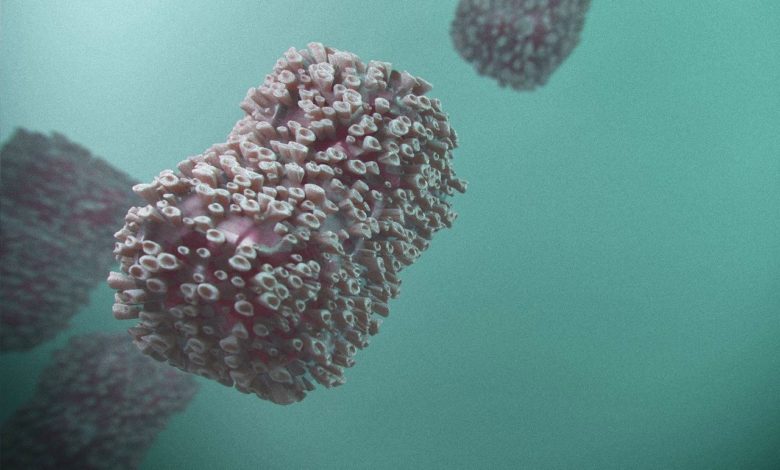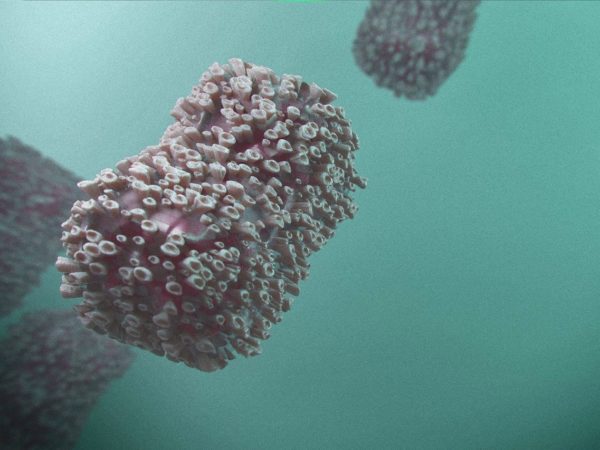
Why We Shouldn’t Tiptoe Around Who’s at Highest Risk for Monkeypox Infection
Does targeting outreach and vaccines to gay men add a stigma to the disease?

(CNN) The Biden administration this month declared the outbreak of monkeypox, a virus spreading disproportionately among men who have sex with men and their sexual networks, a public health emergency.
Not wanting to reproduce the kind of anti-gay stigma seen during the early AIDS crisis, some argue that articulating which group is at the highest risk for monkeypox infection might be dangerous.
Yet experts say that the insistence on generalizing warnings both hurts outreach to the most vulnerable people, including Black and Latino men, and oversimplifies the lessons of the AIDS crisis, which illuminated the importance of battling stigma and pushing for care for those who needed it.
“We don’t want to add stigma to a delicate situation, but then our messaging becomes so broad that nobody knows which people we’re speaking to — and that becomes a real problem,” Robert Fullilove, a professor of clinical sociomedical sciences at the Columbia University Medical Center, told CNN.
In short, experts say that we shouldn’t tiptoe around the issue. Instead, we should face it directly, and keep an eye toward expanding access to care.
What the early data show
Part of the issue with talking about monkeypox in oblique terms is that we end up overemphasizing who can get the virus and downplaying who does get it, according to Melanie Thompson, an Atlanta-based HIV physician, and researcher.
Take a detailed breakdown of monkeypox case records that the US Centers for Disease Control and Prevention published this month. Anyone can get the virus, yes, but the CDC analysis shows that 94% of cases were among men who had recent sexual or close intimate contact with another man. Further, 54% of cases were among Black Americans and Latinos.
Early data from the Georgia Department of Public Health and the North Carolina Department of Health and Human Services show a similar pattern: In both states, monkeypox is overwhelmingly affecting Black men.
Thompson underscored the importance of clarity, of communication that spells out where, precisely, the virus is.
“The purpose of data isn’t just to crunch numbers — but to ensure that the people most impacted by monkeypox or any other disease entity are getting the services that are required,” she said.
Thompson added, “The message that anybody can get monkeypox spreads fear among the general population. It distracts from the messaging we need to get to people at risk for monkeypox infection.”
And this kind of obfuscation doesn’t merely distract. It marginalizes in a different way, she said.
Jim Downs, an epidemic disease historian at Gettysburg College and the author of “Maladies of Empire: How Colonialism, Slavery and War Transformed Medicine,” echoed some of Thompson’s sentiments.
“The evidence shows that men who have sex with men are at a higher risk than any other population or group,” he said. “So when we talk about directing messages and, more importantly, directing vaccines, we need to make sure that those efforts are purposely targeting the people at highest risk, as opposed to people who might think, ‘Well, why not get vaccinated? It’s just a good idea.'”
It’s worth underlining, experts say, that while Black men appear to bear the majority of monkeypox cases, it’s not because they’re Black.
“When we use race as a way of identifying an important characteristic of a person who’s ill, some people think that race is biologically active — there must be something about brown skin that makes becoming infected with monkeypox more likely,” Fullilove said. “But that’s not the case. What we’re looking at is the dynamic of who hangs out with whom and where they socialize.”
Thompson also injected a note of caution into the conversation.
“There isn’t any sort of racial predilection to monkeypox,” she said. “It has to do with structural racism and the nature of communities and cultural practices.”
She said that Georgia, for instance, is still very segregated along lines of race and sexuality.
“This means that people who are Black are likely to have sexual partners who also are Black,” Thompson explained. “And because they’re a smaller proportion of the population, there’s a higher likelihood of coming into contact with the virus.”
If there’s a silver lining, it’s that it ought to be easier to contain and eradicate monkeypox because we have a more concrete sense of where the bulk of the infection is.
‘AIDS activism wasn’t just about saying the right thing’
The push by some for broad monkeypox messaging is based on good intentions and seeks to stave off the ferocious anti-gay stigma seen during the AIDS crisis in the 1980s and ’90s.
Yet that approach strips the period of complexity.
“I think that there’s a very well-meaning attempt not to contribute to anti-gay stigma. Lots of people have a broad sense of how that worked in the context of the early AIDS epidemic. I don’t think that it’s necessarily a nuanced understanding of how it happened, but there is an awareness that it happened and a sense that we shouldn’t do it again,” Dan Royles, an associate professor of history at Florida International University and the author of “To Make the Wounded Whole: The African American Struggle Against HIV/AIDS,” told CNN, adding that all this is occurring in the context of a right-wing assault on LGBTQ rights.
Royles said that AIDS activists’ ambitions were vast; they extended beyond the realm of messaging.
“AIDS activism wasn’t just about saying the right thing,” he explained. “It was about getting care to the people who needed it.”
Consider some of the work of the AIDS-fighting organization ACT UP (the AIDS Coalition to Unleash Power). On May 21, 1990, more than 1,000 protesters stormed the National Institutes of Health in Bethesda, Maryland. Their purpose: to urge the NIH to correct what activists saw as the glacial pace of AIDS research and treatment efforts.
In other words, faced with the government’s inadequate response to the epidemic, activists took matters into their own hands and fought for a more humane health system. (Notably, present-day queer communities are doing something similar, as they grapple with sluggish state efforts to counter monkeypox.)
This isn’t to diminish the value of careful messaging.
Thompson thinks that there’s a high level of stigma attached to monkeypox. She said that physicians are hearing from some patients that they’re ashamed to have the virus.
Complicating matters further, she added, is the fact that there are care providers who don’t want to see people with monkeypox — meaning that those with the virus have fewer places to get treatment.
Clearly, messaging that doesn’t shame matters a great deal, and is partly influencing the ongoing debate over whether to call monkeypox a sexually transmitted disease, as my CNN colleague Jacqueline Howard recently reported.
Still, Royles’ deeper point is crucial. As we continue to confront monkeypox, we shouldn’t lose sight of the fact that the chief goal is widening access to care.
“Our politics often gets boiled down to debates over discourse and messaging that are divorced from the material reality of people’s lives,” Royles said. “Not unlike HIV and AIDS, monkeypox has significant material consequences in your body if you get it. It’s so embodied that it’s deeply ironic that so much of the conversation is focused on discourse, which is disembodied in so many ways.”
Or as Joseph Osmundson, a clinical assistant professor of biology at New York University, aptly summarized the difficulty of getting access to care, “You cannot message away an infectious disease. We need tests, treatments, and vaccines, none of which came in time.”
The-CNN-Wire
™ & © 2022 Cable News Network, Inc., a Warner Bros. Discovery Company. All rights reserved.











Comments